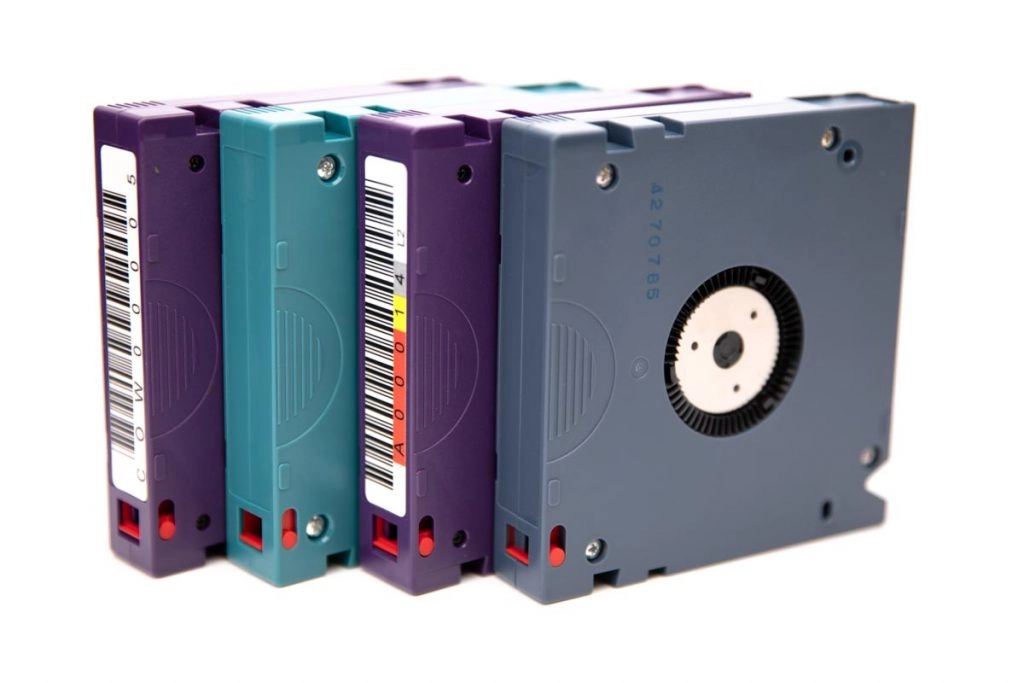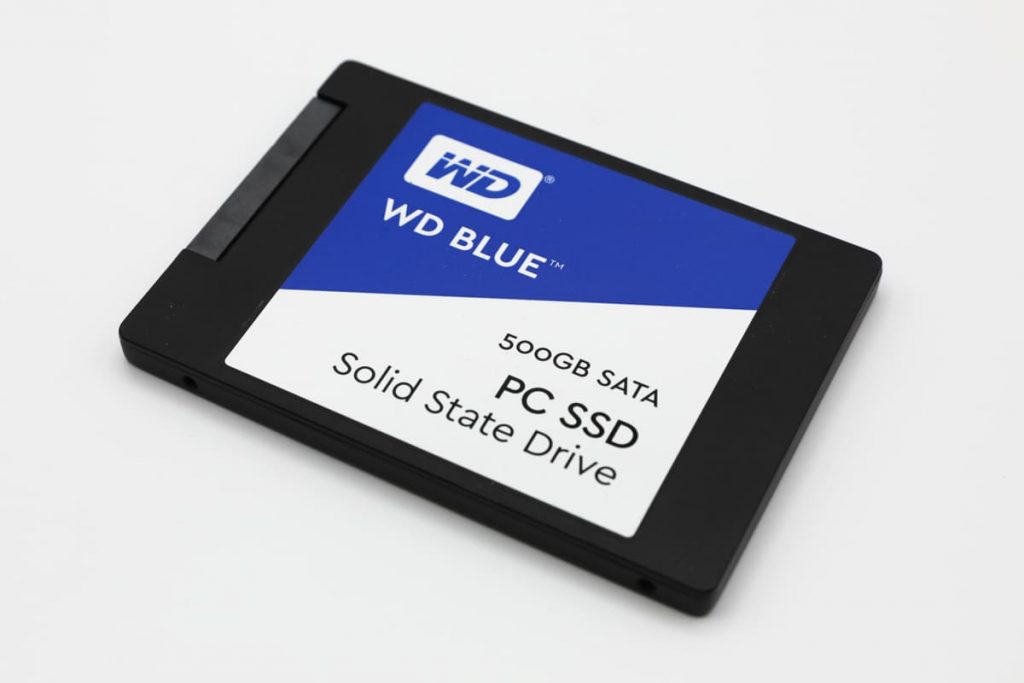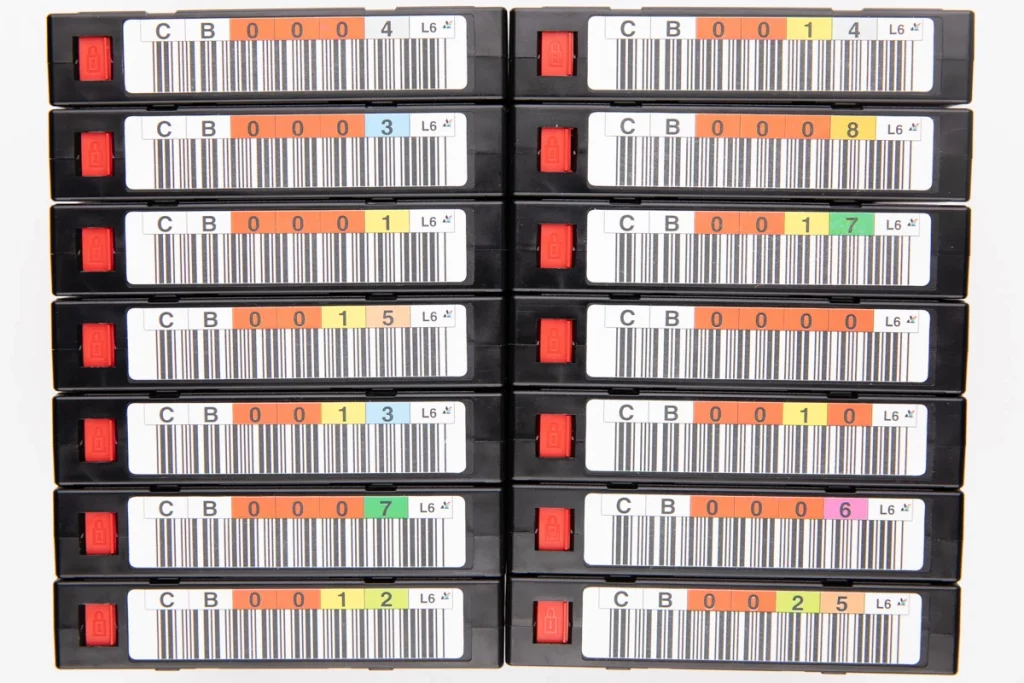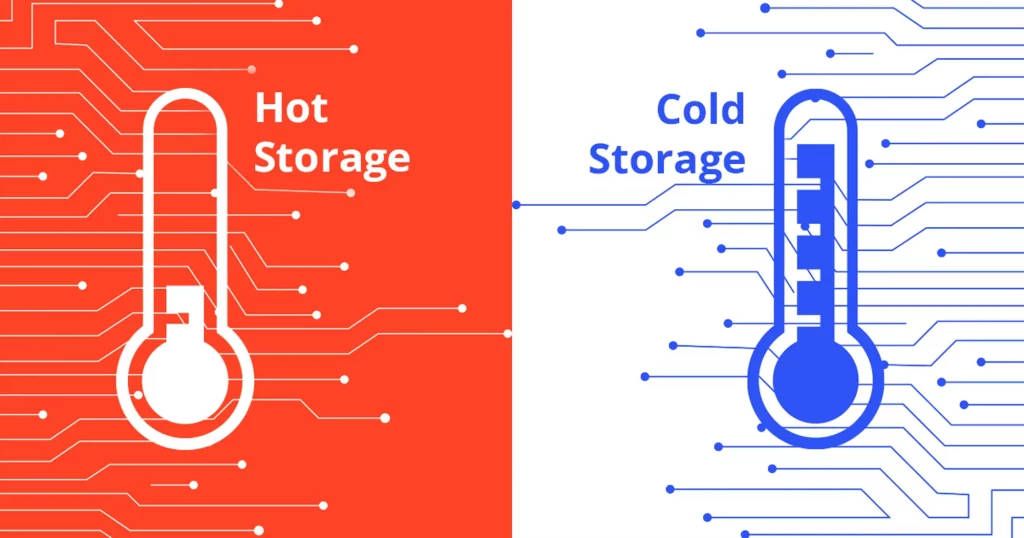Hot storage vs Cold Storage: these are two key concepts in data management that organizations need to grasp to make informed decisions about how best to store their valuable data. This blog post will delve into the complexities of hot and cold storage, highlighting their differences, advantages, and ideal usage scenarios. Whether you’re a data scientist, a business owner, or someone just interested in data storage, this exploration will offer valuable insights.
Cold Data Storage
Cold Data Storage is storing data that is not frequently accessed or used. This type of storage solution is typically less expensive than hot storage. Cold storage is for long-term data retention. Data with regulatory or compliance requirements for long-term preservation is most effectively stored in cold storage. It’s also a great choice for organizations looking to preserve older data without incurring high costs.
Cold storage systems often employ data deduplication and compression techniques to maximize storage efficiency. These systems prioritize cost-effectiveness and capacity rather than immediate access or high performance. Because data in cold storage is accessed less frequently, the time taken to retrieve it can be significantly longer, a factor known as latency. Cold storage is ideal for data that is not required on-demand but may need to be accessed in the future.
Cold Storage Examples
There are various examples of cold data storage systems in the market today, such as tape libraries, magnetic tapes, optical disks, and even cloud-based solutions. Tape libraries have been popular for large organizations seeking cost-effective, long-term storage solutions. They offer high capacity and low cost per gigabyte compared to other storage options.
Magnetic tapes are another example of cold storage systems that have existed for decades. These tapes are known for their durability and reliability, making them popular for long-term data retention. They have the added advantage of being resistant to water, heat, and other environmental factors.
Optical disks like CDs and DVDs also fall under cold storage solutions. While they may not offer as much storage capacity as tape libraries or magnetic tapes, they are affordable for storing small amounts of data that may not need to be accessed often.

Lastly, cloud-based storage solutions have become increasingly popular as cold storage options due to their scalability and cost-effectiveness. With the vast amount of data generated daily, organizations can easily store large volumes of data in the cloud without worrying about hardware restrictions or high costs.
Cold Data Storage Benefits
The primary benefit of cold data storage is cost-effectiveness. As mentioned, this storage solution is designed for long-term retention and prioritizes cost per gigabyte rather than immediate access or performance. This makes it an ideal choice for organizations with large volumes of data that do not need to be accessed frequently.
Another advantage of cold storage systems is their high durability and reliability. Tape libraries, magnetic tapes, and optical disks are all known for their longevity and ability to withstand harsh environmental conditions. This makes them a perfect solution for preserving data that must be kept for regulatory or compliance purposes.
Usage Scenarios for Cold Storage
Cold storage is best suited for storing infrequently accessed data but still needs to be retained for future use. Some common usage scenarios include:
- Long-term data retention for regulatory or compliance purposes (e.g., financial records, medical records)
- Archiving older data that may need to be referenced at a later date
- Disaster recovery and backup solutions
- Storing large data sets for analytics or research purposes
Hot Data Storage
Hot Data Storage refers to the practice of storing data that is frequently accessed and needs to be readily available. This type of storage solution prioritizes performance and accessibility over cost-effectiveness.
Hot storage systems are typically designed to handle large volumes of data with high-speed access, making them ideal for applications with high data processing and retrieval needs. These systems employ caching, replication, and tiered storage techniques to ensure data is readily available for real-time usage.
Hot Storage Examples
Some common examples of hot data storage include solid-state drives (SSDs), flash memory, and cloud-based storage solutions. SSDs are known for their high-speed access, making them a popular choice for applications that require real-time data processing.

Flash memory, used in devices such as USB drives and digital cameras, also offers fast access to data but with less storage capacity than SSDs.
Cloud-based solutions can also serve as hot storage options, especially for organizations looking to quickly scale their data needs. With cloud-based solutions, data can be accessed and retrieved in real-time, making it an ideal choice for e-commerce, online banking, and social media applications.
Benefits of Hot Data Storage
The main advantage of hot data storage is its ability to provide fast access to frequently used data. This makes it appropriate for applications requiring real-time data processing and analysis. Additionally, hot storage systems often have built-in redundancy and failover tools to ensure data is always available, making it a reliable choice for critical operations.
Hot Data Storage Usage Scenarios
- Real-time applications that require fast data processing (e.g., stock trading, online gaming)
- High-volume transactional systems (e.g., online banking, e-commerce)
- Virtual machine storage for rapid access and deployment
Hot vs Cold Storage
Hot storage vs. cold storage is often compared when discussing data storage solutions. As the name implies, hot storage keeps data frequently accessed or manipulated in an easily accessible format, prioritizing speed and performance. It is typically more expensive due to the high-performance hardware and resources it requires. In contrast, cold storage is for the long-term storage of infrequently accessed data. It prioritizes low cost per gigabyte and high storage capacity over speed and performance.
When choosing between hot and cold storage, one must consider the organization’s specific needs. Hot storage will be optimal if real-time access and data processing are essential.
However, cold storage is the more cost-effective and practical option for data that doesn’t require frequent access but needs to remain available for future reference or regulatory reasons.

Therefore, the decision between hot and cold storage entirely depends on the particular use cases, data accessibility needs, and budget constraints of an organization.
Hot Storage vs Cold Storage Comparison Table
In summary, hot and cold storage serve different purposes in data storage. While hot storage prioritizes speed and performance, cold storage focuses on cost-effectiveness and high capacity. By understanding the differences between these two types of storage solutions, organizations can make informed decisions about which option best suits their specific needs.
| Comparison | Hot Storage | Cold Storage |
|---|---|---|
| Definition | Stores frequently accessed data for real-time use | Stores infrequently accessed data for long-term retention |
| Cost | More expensive due to high-performance hardware and resources | More cost-effective with a focus on low cost per gigabyte |
| Access Speed | High, with built-in redundancy and failover mechanisms | Lower than hot storage solutions |
| Usage Scenarios | Real-time applications, high-volume transactional systems, virtual machine storage | Long-term data retention for regulatory/compliance purposes, archiving older data |
| Primary Storage Mediums | Solid-state drives (SSDs), flash memory, cloud-based storage solutions | Tape drives, optical discs, and magnetic tape libraries |
| Advantages | Fast access to frequently used data, built-in redundancy and failover mechanisms | Low cost per gigabyte, high storage capacity |
Data Recovery for Hot and Cold Storage
Although hot and cold storage may have different priorities regarding data accessibility, both types of storage solutions require reliable data recovery services to ensure the safety and integrity of their stored data. PITS Global Data Recovery Services offers comprehensive data recovery solutions for hot and cold storage systems.

With our advanced technology and experienced team of engineers, we can successfully recover data from various types of hot storage devices, such as SSDs and flash drives. We also offer tape data recovery for cold storage systems, including magnetic tapes and optical disks.
Take the first step to secure your data and ensure seamless access with PITS Global Data Recovery Services.
Whether you’re grappling with hot storage vs cold storage decisions, we are your reliable partner for data recovery from all storage devices. Contact us today and let our team of experts provide you with the bespoke data recovery solutions you need.
Frequently Asked Questions
What is the main difference between hot storage and cold storage?
Hot storage is for data that requires real-time access and processing, while cold storage is more suitable for long-term storage of infrequently accessed data.
What are some examples of hot storage?
Solid-state drives (SSDs), flash memory, and cloud-based storage solutions are common examples of hot storage.
In what scenarios would cold storage be a suitable choice?
Cold storage is ideal for long-term data retention for regulatory or compliance purposes, archiving older data, disaster recovery, backup solutions, and storing large data sets for analytics or research purposes.
Why is hot storage more expensive than cold storage?
Hot storage is more expensive due to the high-performance hardware and resources required to provide real-time data access.
What types of data recovery services does PITS Global offer?
PITS Global offers comprehensive data recovery solutions for hot and cold storage systems, including recovery from SSDs, flash drives, magnetic tapes, and optical disks.
How do I choose between hot storage and cold storage?
The decision between hot and cold storage relies on your particular use cases, requirements for data accessibility, and financial limitations.
